You’re thinking about how to play the coming year.
You might be looking to shed a few pounds
You might have ambitious goals
Whether you are setting up weight loss, or specific race preparation, I’m going to make a case for easy cycling.
Let’s start by defining easy pace.
In a Five Zone System => Zone 0 and Zone 1
In a Three Domain System => The Moderate Domain
When You Lactate Test => Below the point where baseline lactate starts to rise
Using Feel => Go All Day, Conversational Pace
Using Breath Markers => Below The 1st Deepening Of Breath
Aerobic Threshold marks the top of your Easy Zone, also known as the Green Zone
I made a three minute video to help you find it.
Aerobic Threshold is the most important marker for your endurance training.
Why focus on Easy Pace?
Because you might not have it
Because your easy capacity indicates your likely stamina at higher intensities
Because your easy fitness is what enables you to absorb, and recover from, all training
What do I mean, “you might not have it?”
When we learn, particularly running and swimming,
we have no capacity to train easily
our lactate increases above baseline as soon as we start moving
our fat oxidation decreases as soon as we start moving
The figure below is from an excellent paper on this subject
The table shows fitness and metabolic profiles for:
Pro Tour Cyclists - Wide Easy Zone
Recreational Athletes - Narrow Easy Zone
Metabolic Syndrome - No Easy Zone
Implications For Your Training
What improves metabolics?
Time At Intensity
Specifically, Easy Intensity
Whatever your sport, you need to train your mitochondria and improve your capacity to use fat for fuel.

Three ideas to implement immediately.
Cycling As The Cornerstone of Your Metabolic Training
Run:Walk To Reduce The Metabolic Stress of Your Running
Shorter Intervals Focused On Improving Movement Economy
Easy Cycling
The chart below is what this looks like in practice.
I spend the end of last year riding “easy” because 1/3 of my training mix (Swim & Run) was metabolically challenging.
New & Injury-Prone Runners, use cycling to add low-risk load
Novice Swimmers, use the bike to train foundational fitness.
Rowers, Skaters, Skiers… consider your intensity mix across all modes.
Everyone => are your mitochondria getting the attention they require?
Below is my return-to-fitness mix, lots of Green Zone training.
Run:Walk To Reduce Metabolic Stress
You won’t think you’re “racing” when you’re chugging along at 10-12 minutes per mile.
If you’re new to running then that’s exactly what’s happening inside your body.
You’re under a high degree of metabolic stress as soon as your start to jog.
How do we reduce it?
Interval Training, with a twist
Start every run with 10 minutes of power walking
Insert 15-60 second power walking segments throughout the workout
Walk easily at the end of the session until your heart rate is below 100 bpm
I used this protocol in 2022 when I returned to running.
AND
I used this protocol to win.


Obviously, run:walk is different for an elite vs a newcomer.
You’ll find specific ideas on Pages 3 & 4 of my Run Workout Document.
Walk to warm-up
Walk all hills, rollers and rises
Walk to avoid spiking out of your target heart rate zone
Applied humility is the fastest way to improve.
Shorter Intervals
Skaters, rowers, skiers… certain sports are tough to do easily.
When we’re learning:
Heart rate, breathing, lactate… spikes will happen
As we spike… movement economy and fat oxidation will decline
What to do?
Shorten the interval duration
Take whatever rest is required to maintain best technique
Train metabolic fitness on the bike
Shorten => interval durations of 30-60 seconds
Rest => 1:1 ratios, or more
Lower => the metabolic cost of the entire session
Learn land-based sports on the flat, or slight downhills
Use flotation, or short fins, in the water
Reduce the grade, and gearing, for uphill sports
As fitness develops you will be able to lengthen the interval, remove aids, shorten rest and increase the grade.
What This Means In Practice
You must reset your expectations for:
Sport Specific Volume
The Amount of Intense Work Per Week
Time Horizons For Improvement
Volume => If you choose a high-intensity sport then you’re not going to be doing much of it at the start.
Apprenticeship => We never graduate from Base Training. Maintain your metabolic fitness to support race-specific preparation.
Time Horizons => The benefits of easy training compound. Track your power/pace at aerobic threshold - it’s an important metric to understand.
There is significant upside from applying the lessons I’ve explained.
How significant?
I increased my aerobic threshold by 20 bpm in 2022.

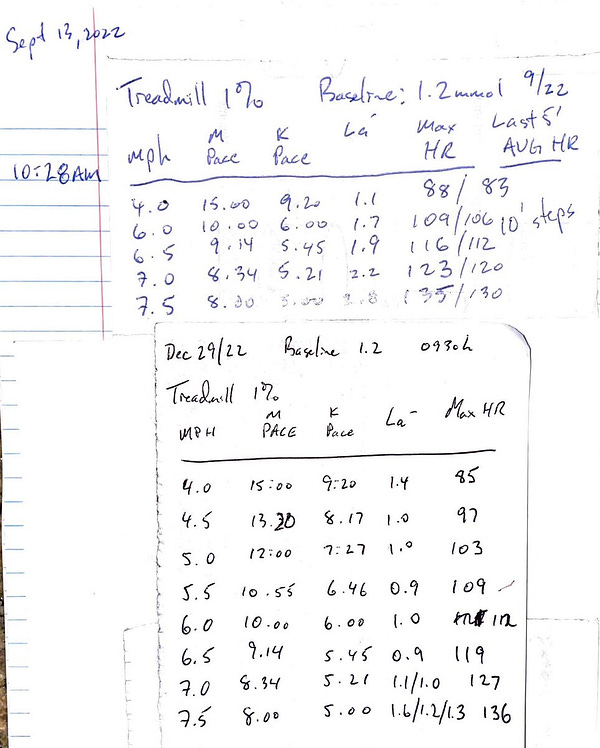

As you apply the lessons of this post:
Your performance at aerobic threshold improves
You can perform, fuel and absorb more work
You develop the ability to recover while moving
Your higher intensity sessions become less stressful
Easy Pace Isn’t Easy
Back To Table of Contents




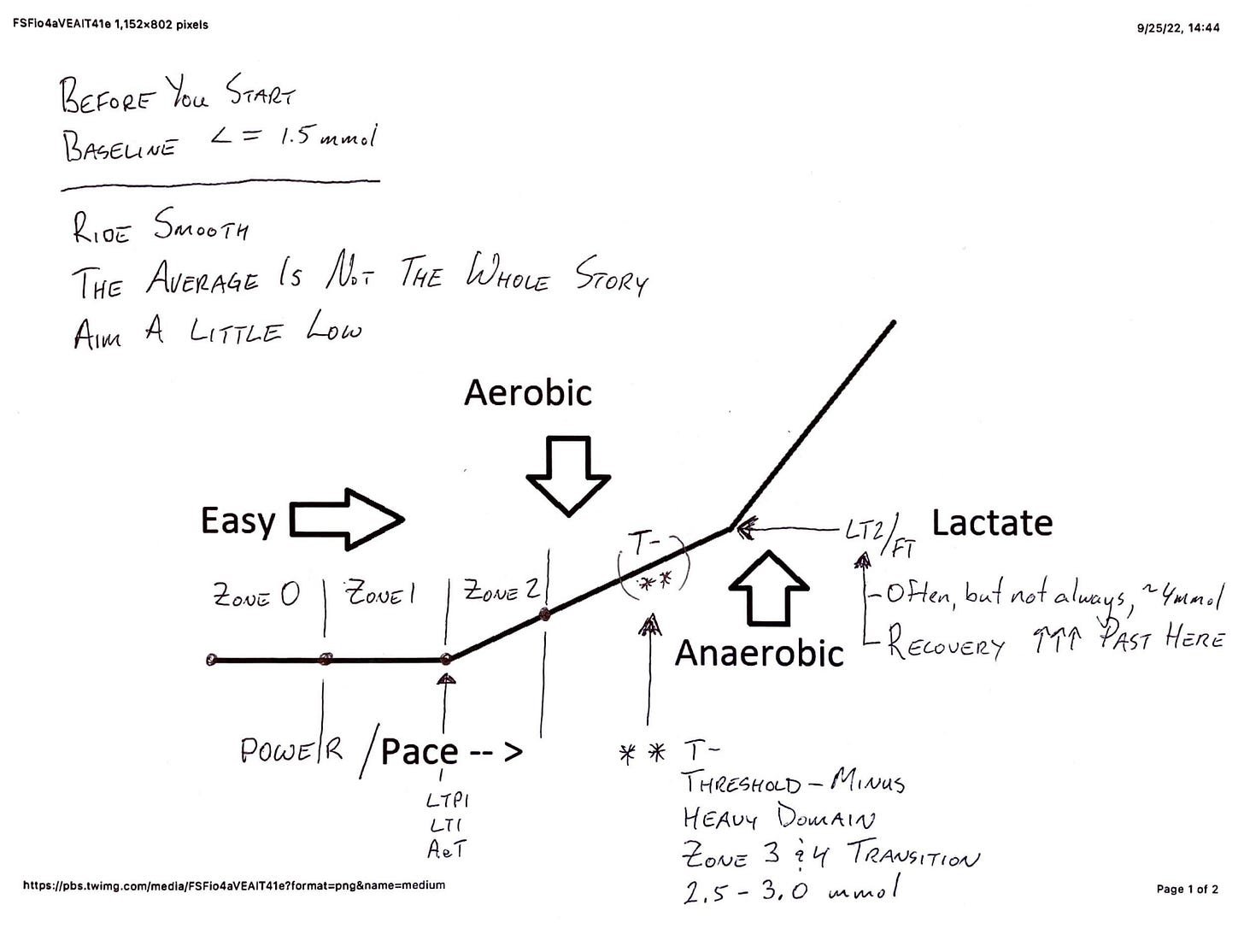

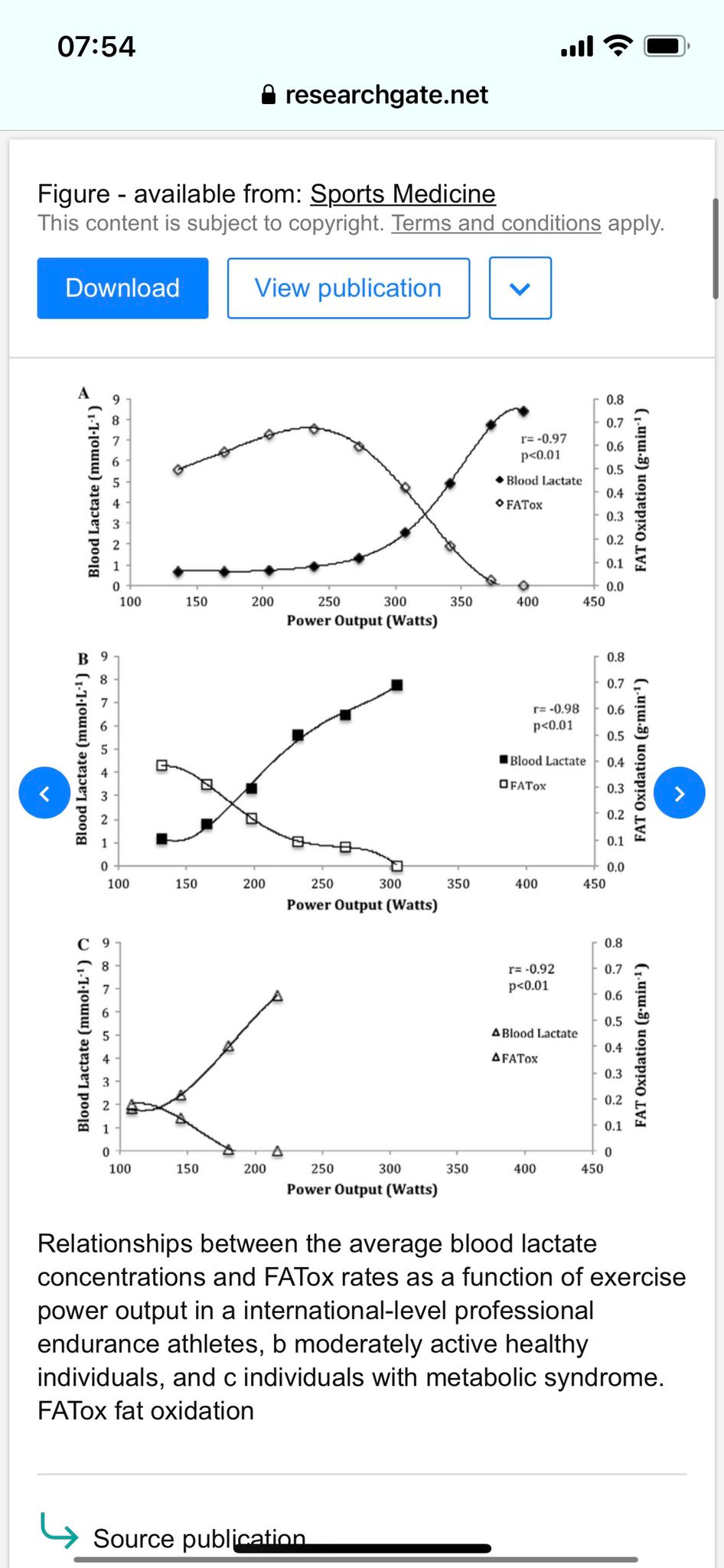
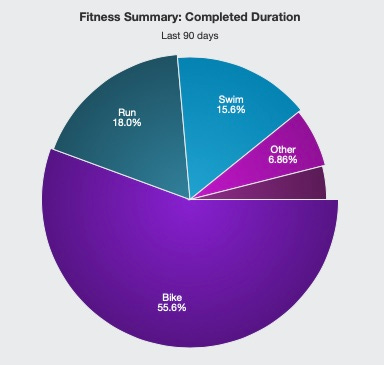
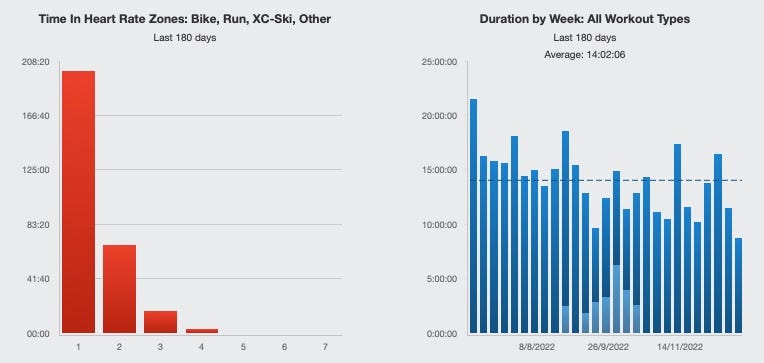
Hi Gordo,
I continue to circle around re-reading your Substack and Twitter, learning new things - thank you.
My context: I’m a competitive amateur runner. I have a good grasp of my run and bike zones by HR and pace/power and an indoor bike trainer.
Questions:
1) What is a good rule of thumb for figuring out the bike substitute for a Z2 or Z3 run? E.g., if I otherwise would do a 50:00 run in Z2, should I match that with a 50:00 Z2 bike? Or 1.5 or 2x as long on the bike (75:00 or 100:00)? Or is it based on TSS equivalency?
2) Are there any advantages to an athlete’s development as a runner by using Z3-Z5 bike workouts from a duathlon training plan?
Or should a runner, in general, stick to the bike for Z0, Z1 and Z2 metabolic fitness efforts and not use it for Z3-Z5?
I know you have shared ingenious use cases where the bike can be used to aid running specific capacity. E.g., the SART for testing run readiness, and your spin-ups help runners who lack good turnover or who don’t have good musculoskeletal durability, etc.
If you have the occasion to address any of this, it would help me refine my mental model of cross-training for runners - thank you.
Interestingly, I see that cross-training is getting a bit wider acceptance. It was fascinating to read that this year’s NCAA women’s D1 XC champ, Parker Valby, runs just 3 times a week, using cycling, a more evolved form of an elliptical machine and swimming for her other workouts.
Hi Gordo. New subscriber, loving your writing and video content.
Can you share any advice on the bike/smart trainer setup you recommend for someone coming to road cycling for (almost) the first time, wishing to do the bulk of their training inside with the occasional outdoor ride? I'm currently a marathoner managing ok with the run volume and I ride a mountain bike for a work commute every now and then. Cheers, and thank you!